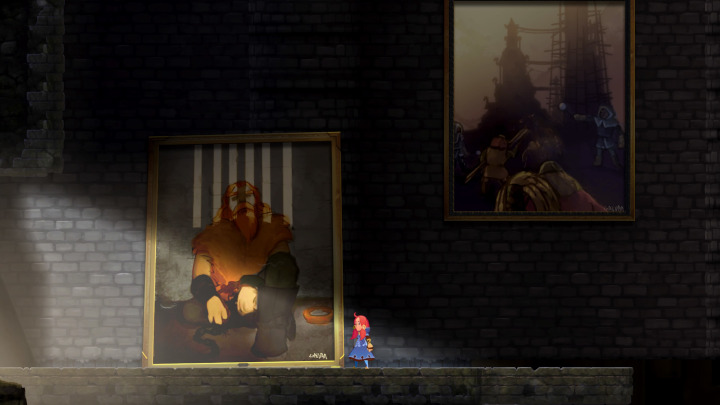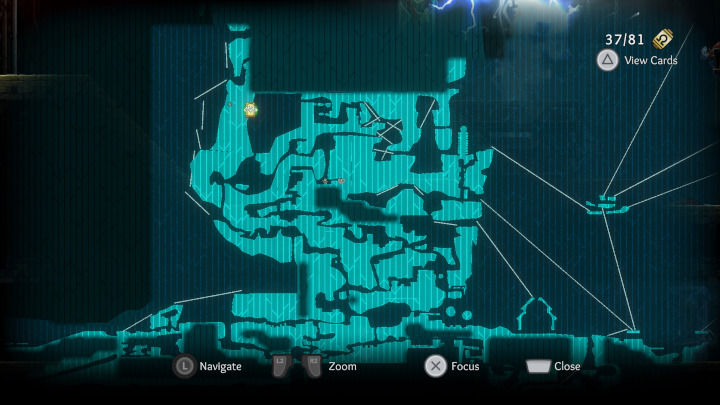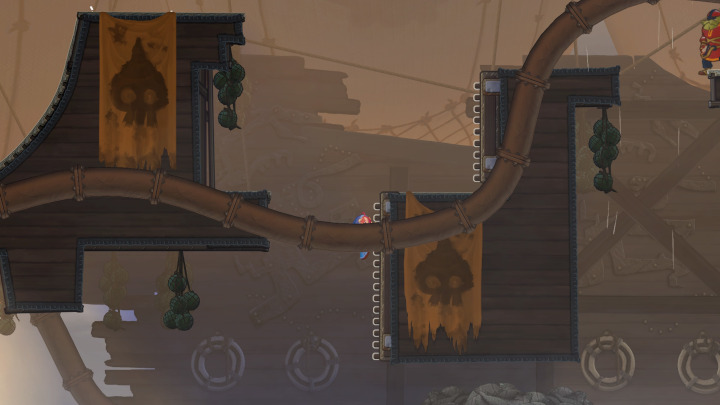
I was ten years to late to the Teslagrad party, but I’ve been able to get myself up to speed thanks to the recently released Teslagrad Remastered. And I adored Teslagrad Remastered. It’s a really well-made puzzle platformer with a gorgeous art style, a batch of really satisfying puzzle mechanics, and some incredible boss fights. I loved it so much that I ended up collecting all 36 hidden cards and earning the game’s “Perfect” ending. That’s 100% completion, baby!
But after having played Teslagrad 2 for several hours, I have to say that the sequel is several steps beyond the original. And having played them back-to-back (I fired up Teslagrad 2 the same day I earned 100% completion in Teslagrad Remastered), I can truly admire the work that went into improving almost every aspect of the game.
First up, Teslagrad 2 keeps the basic magnet mechanic. Well, half of it. In Teslagrad, you could turn your magnetic field red or blue, while in Teslagrad 2 you only have blue as an option (the L2 button on PlayStation, which was your red field in the pervious game, is used for other things now). But you end up not really missing that red field, because Ruin Games is so clever about making that one magnetic field do so many great things. For instance, it now will make invisible, intangible objects become both visible and tangible.
(To be fair, you will occasionally find flowers that turn your magnetic field red, and you can earn the red polarity secret ability late in the game. So it’s not completely absent from the game, but it’s not a core part of the magnet mechanic the way it was in the original.)

The Blink teleport move was improved as well. Now, if you’re magnetized to a wall so you’re standing sideways, you can Blink up or down instead of exclusively sideways. And later in the game, you can unlock a multi-directional Blink skill, which means you can Blink up, down, left, or right based on which direction you’re holding the left stick. This is a game-changer.
One thing I do have to say, though, is that Blink feels slightly slower in Teslagrad 2, but not enough to really cause any problems. I got used to in within maybe 30 minutes, but it did take some playing around with before I felt totally comfortable with it. However, it does feel like it recharges slightly faster, and there’s also a spark animation that gives you a visual clue about when it’s recharged. This is definitely a step up.
Oh, and you’ll even get the ability to do a water dash that lets you traverse underwater areas quickly — and even climb waterfalls. It’s so much fun submerging yourself super deep so you can dash upward and launch yourself out of the water like Ecco the freakin’ Dolphin.

And then there’s the option to pick up blocks. I can’t even begin to explain how much time I spent moving blocks around in the first game by running into them or wedging myself behind them, wishing I had this sort of option. Grabbing boxes replaces your ability to punch them to change their color, but seriously, being able to pick them up and throw them is just way better all-around.
The level design is better too. Sure, the first game was great, but Teslagrad 2 is more labyrinthine, more interconnected, and more jam-packed with secret areas. The map (which you can access on PlayStation by tapping the touchpad on the DualSense) is better too. It’s less visually appealing, with this almost Breath of the Wild-y “ancient computer screen” aesthetic, but it’s way, way easier to use. Which is good, because you’re going to end up using it a lot — especially if you want to uncover all of the game’s secrets.

The environments are more varied too. Instead of taking place almost entirely inside a tower (with a brief city segment in the beginning and end of the game), Teslagrad 2 brings you to the forest, dunks you into icy caves, and even plants you on a Mario 3-style airship for a bit.
Teslagrad 2 takes a similar approach to delivering its lore: It gives you vague story snippets in background details like paintings or steampunk video terminals (or puppet shows in the first game), and then in a series of collectible cards that can be found lying around the world. The pictures on these cards tell a vague story, though a lot of the details will be left to your own imagination (or to fan communities) to suss out.
Here’s the thing, though: Teslagrad had 36 cards to collect, while Teslagrad 2 has 81. If card-collecting was your favorite part of the first game, you’re going to absolutely love the fact that the sequel has two and a half times the quantity.
The first game was gorgeous, and while the score was minimalist for the most part, it was suitably atmospheric. Teslagrad 2, though? Holy smokes, this game looks and sounds phenomenal! The music feels more diverse, with an almost Viking-sounding flavor to it, while the art is even more excruciatingly detailed than it was in the first game. This whole package is stunning to look at and listen to.

The bottom line is that if you loved Teslagrad, you’re going to love Teslagrad 2 even more. It offers a lot of the same things as the original, but it goes bigger and better with almost all of it. Ten years was a long time to wait for this sequel, but boy howdy is it ever worth the wait. Teslagrad 2 is a Metroidvania puzzle-platformer masterpiece.
Disclaimer: I was given a review code for both Teslagrad Remastered and Teslagrad 2 for PS5, but the opinions expressed in this article are my own.